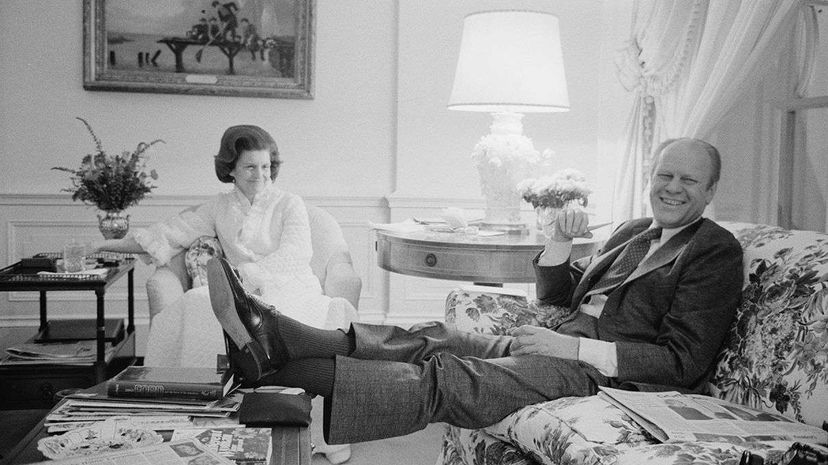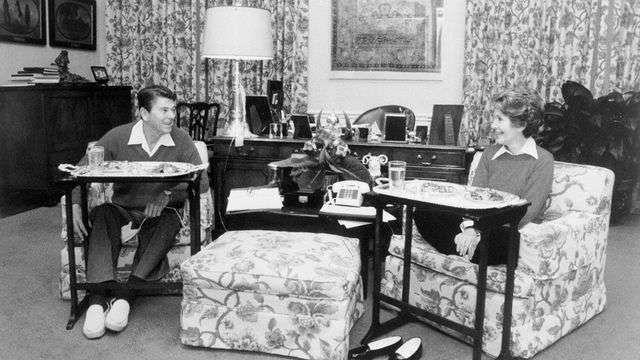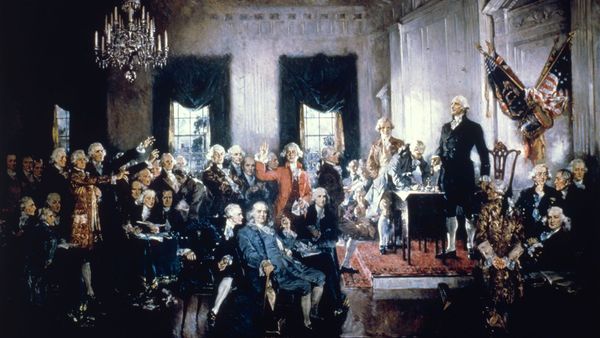
From its opening in 1800, through one nasty bit of arson and several renovations, the White House has been the home of every president but one: George Washington. The first U.S. president may have commissioned the place and OK'd the architect, but John Adams, the second president, was the first to live there.
"In my mind, there are kind of two [things] that kind of keep presidents in the White House. No. 1 is the symbol. The White House is so linked as a national symbol to the presidency," said Evan Phifer, a historian with the White House Historical Association we spoke to in 2016. "And the second is, in the White House, everything is there. They have security, they have the working space to accommodate a working president."
Advertisement
Added Joel Treese, another WHHA historian, in 2016: "I don't know of any president who considered not living there. It sort of goes with the territory."
But it's not as if the president of the United States has to live in the White House. No law requires it. Although with everything there, and a commute like that — the West Wing is a few steps from the main residence — the live-work-play setup has thus far proven impossible to turn down.
Let's do a quick review of that setup: The grand, old edifice has some 55,000 square feet (5,110 square meters) of living and working space, 132 rooms, at least three kitchens, 35 bathrooms and a rather famous oval-shaped office where the leader of the free world punches his time card. The White House sits on an 18-acre (7.3-hectare) plot with a pool, a tennis court and a backyard big enough to land a helicopter.

U.S. presidents may have yet to turn down living in the White House, but governors all over the country have backed off living in governor's mansions, for a variety of reasons (often because it's not really home). The governor of New York (Andrew Cuomo) is just one of many chief executives not living in their state's big house. When California's former Governor Jerry Brown moved into that state's Governor's Mansion in 2017, it had been without a full-time resident for more than half a century before. Massachusetts, Idaho, Arizona and Rhode Island are among the states that don't even have an executive residence.
But the White House has endured as a home base for sitting presidents for more than two centuries. The President's Palace (a one-time name) is not always immediately occupied by whomever takes office. But whoever takes office, ever since Adams first crossed the threshold in 1800, lives there eventually.
"Often presidents are not there in the first few weeks of their terms if they succeeded a president who died in office," said Treese. "Like [Theodore] Roosevelt didn't move in right away [after William McKinley's assassination]. Truman didn't move in right away [after Franklin Delano Roosevelt's death]. Nor did the Johnsons [after John F. Kennedy's assassination]. Nor did Andrew Johnson [after Abraham Lincoln's assassination]. They give the departing first family a little grace period."
The most difficult living arrangements for a White House resident, hands down, were James Madison's. On Aug. 24, 1814, during what is now known as the War of 1812, British forces rolled into Washington, descended upon the White House (the President's House then), scarfed down a dinner that had been prepared for the president, his cabinet and some military officers ... then looted and burned the place.
That galling torch-and-run — talk about a Brexit — forced Madison and his wife Dolley into a grand old mansion down the street, the Octagon House, and prompted some discussion on whether to rebuild the White House at all. Indeed, politicians mulled moving the seat of government out of D.C. entirely.
Madison insisted on rebuilding on the same spot — using the original architect, James Hoban, and incorporating the scorched mansion's sandstone walls that remained standing — and reconstruction soon began. Madison's successor, James Monroe, had to cool his heels at his home in Virginia while the finishing touches were being applied, but he moved in about six months after his inauguration in 1817.
Compared to the Madisons' experience, the actual living part of residing in the White House has been a relative breeze for most other presidents. Sure, some have had to live through the incessant hammering and sawing associated with construction and/or renovations. Others may or may not have had to deal with alligators on the premises (that's probably just legend). The White House stables caught fire during Lincoln's presidency, and the West Wing endured a fire in 1929.
It's not always a financial win living in the White House, either, as many first families have found out. In her book "The Obamas," author Jodi Kantor pointed out the many expenses that the White House occupants have to shell out. Per NPR:
Still, for all the hassles involved — tourists constantly tromping about, snapping pictures — it is an undeniably cool place to call home. Only 44 people ever have had the chance to be the head of that House. (It wasn't built until after Washington, remember, and Grover Cleveland lived there on two different occasions.) It's an enduring symbol of power and freedom.
And nobody who lives there ever has had to worry about giving out directions.
Advertisement

